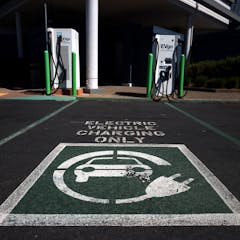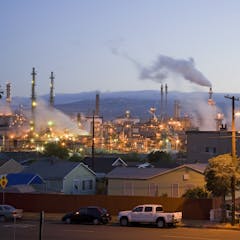
Articles on California
Displaying 41 - 60 of 281 articles

More homes are burning in wildfires in nearly every Western state. The reason? Humans.

If the EV transition focuses exclusively on drivers in privately owned cars, it won’t meet many Americans’ mobility needs, particularly in underserved communities.

The Los Angeles area has over 20,000 active, idle or abandoned oil wells. The city and county have voted to ban new ones after studies showed health problems in residents living nearby.

California is one of the world’s largest economies, and it’s aiming for net-zero emissions by 2045. A transportation expert involved in the plan explains why it just might succeed.

Mass shooters over the age of 60 are rare, but often differ from younger gunmen in motives and actions prior to their attack.

Once seen as the Chinese Beverly Hills, Monterey Park is now seen as Asian America’s ‘town square’ – the impact of a mass shooting there will ripple across the country.

A new neuropsychology study on California wildfire survivors found chronic cognitive problems in addition to anxiety and PTSD.

The majority of flood-related deaths involve vehicles in water. What if flood models could warn of the risks street by street using real-time storm forecasts? Machine learning can make it possible.

Fifty years ago, the Salton Sea was a draw for boaters and fishermen; today it’s an ecological time bomb. Two water experts who served on a state review panel describe its proposed rescue plan.

Urban infrastructure was designed to take stormwater out to the ocean quickly. Now, California needs that precious water.

How the artist found endless variety in the daily view from his bed, cycling through the seasons with kaleidoscopes of light, colour, texture, form and space.

Unprecedented droughts leave the subsurface drier than usual, affecting water supply in subsequent years.

Millions of people around the world suffered through deadly flooding and long-lasting heat waves in 2022. A climate scientist explains the rising risks.

Some of the most powerful offshore wind is over water too deep for a standard wind turbine. Engineers found a way around the problem.

Millions of dollars have gone into California’s forest carbon offset program – with little new carbon storage to show for it, a new study suggests.

Universities, museums and other charities that find themselves saddled with names that have become sullied must choose among a few bad options.

Abortion rights were on the ballot in five states during the midterm elections – all broke in favor of abortion-rights advocates.

Poor communities of color have spent decades battling US industrial and agricultural pollution. A new EPA office is designed to support their struggle, but history suggests reason for caution.

As California goes on regulating air pollution, other states often follow – including the Golden State’s ambitious goals for cleaning up emissions from trucking.

Businesses can spend huge amounts of money to influence Congress. But sizable lobbyist and campaign donations also go to state campaigns and lawmakers to influence policymaking.
